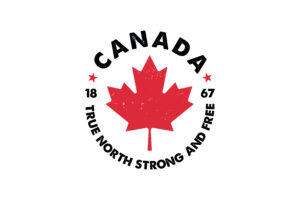It will come. It was mandated back in 2011 with the signing of the Food Safety Modernization Act; and FDA contracted out a tracking pilot program in 2012. The industry drove the Produce Traceability Initiative to create a farm-to-retail tracking system. Following the 2018 romaine lettuce E. coli outbreak, the agency worked with the produce industry for “voluntary” source labeling. And now, in 2019, FDA has issued its report on the romaine investigation in which an issue is made about tracking; our new FDA Deputy Commissioner for Food Policy & Response Frank Yiannas, is well-known for his focus on Blockchain, product tracking and traceability; and the agency just introduced a drug supply chain tracking pilot project. My guess: It’s only a matter of time before a traceability regulation will be issued, at least for those foods that FDA (eventually) determines to be high risk. But how much time? In my view the timeline, whatever it was or should have been, has been moved up. From what I know of Frank Yiannas, he will be all over this and pushing hard. In this week’s newsletter, we’ll take a look at the drug tracking program as a potential harbinger of food tracing to come. Next week, we’ll take a deeper dive into the romaine outbreak report, along with FDA’s announcement on beginning Produce Safety inspections this spring. Just as the food tracing pilot programs were required by FSMA, the drug tracing pilot answers a requirement of the 2013 Drug Supply Chain Security Act (DSCSA), which outlines critical steps to build an electronic, interoperable system by November 27, 2023, that will identify and trace certain prescription drugs as they are distributed within the United States. We could scoff at the 2023 implementation date, seeing as how FSMA’s food traceability requirement has not yet materialized despite its 2012 pilots, but we are in a different time today. Not only are FDA’s feet being held to the fire on the identification of high-risk foods through civil action by activist groups, but transparency and source identification is increasingly demanded by consumers. And, as I stated above, Yiannas, who was formerly Walmart’s Vice President of Food Safety has continually worked on projects for increased traceability of food – from an RFID project that never quite took hold to blockchain which is to be required of all produce suppliers by September 2019. Although Yiannas does not work with the drug side of FDA, you can bet he is keeping an eye on this project. Another element of the DSCSA pilot project that I find interesting is its requirement to be “an electronic, interoperable system” whereas FSMA’s mandate was for FDA to establish recordkeeping requirements for high-risk foods designed to facilitate rapid and effective tracing. In its report to Congress on this, the agency’s recommendations included the line that “FDA would prefer, when possible, to receive records electronically to be able to analyze the information more quickly.” This is primarily due, I would suspect, to the large number of small producers who still work on manual systems, while the drug industry has long been held to higher accountability overall. Another differentiating factor is that the drug supply pilot project is focused primarily on enhancing tracing and verification of prescription drugs “to ensure suspect and illegitimate products do not enter the supply chain.” The track-and-trace system will be aimed at reducing diversion of drugs distributed domestically and will help keep illegitimate products and counterfeit drugs from entering the supply chain and reaching patients. Thus, if applied directly to the food chain, the focus would be more on the tracking of food fraud than contamination. Interestingly, in the midst of a lengthy quote from FDA Commissioner Scott Gottlieb, M.D. in the drug tracking pilot, a comment bearing out my predictions is slipped in (the italics are mine): “We’re also focused on making improvements across the other products we regulate, especially related to food and our ability to address foodborne outbreaks. We’re invested in exploring new ways to improve traceability, in some cases using the same technologies that can enhance drug supply chain security, like the use of blockchain. To advance these efforts, the FDA recently recruited Frank Yiannas, an expert on the use of traceability technologies in global food supply chains. He’ll be working closely with me on ways for the FDA to facilitate the expansion of such methods, such as blockchain technology, to further strengthen the U.S. food supply.” When one looks at the romaine lettuce E. coli outbreak, it is easy to see why such a system is needed. Not only did the outbreak last for months, resulting in 62 illnesses, 25 hospitalizations and 2 cases of hemolytic uremic syndrome (HUS), FDA’s summary report concluding that water from an on-farm water reservoir “most likely” led to contamination, adds, “FDA cannot rule out that other sources or means of romaine lettuce contamination with the outbreak strain of E. coli O157:H7 may have occurred.” As such FDA recommendations not only include enhanced grower compliance with the Produce Safety Rule and GAPs, but also that the leafy green supply chain be able to trace product back to the specific source in real time; make information about the source readily available for consumers; and adopt traceability best practices and state-of-the-art technology to assure quick, accurate and easy access to key data elements from farm to fork when leafy greens are involved in a potential recall or outbreak. But, one final thought on this topic for now, is to urge FDA to not only move forward with haste on traceability systems, but also to work with local and state regulators to increase the speed by which genetic data from ill patients is analyzed and followed up on at the consumer, retail and restaurant level. Currently this part of traceability is way too slow and too cumbersome, and that also creates a public health risk that the industry, who wants to do the right thing, is powerless to stop until a source is identified. Watch this space next week for more on FDA’s Investigation Summary. About The Acheson Group (TAG) Led by Former FDA Associate Commissioner for Foods Dr. David Acheson, TAG is a food safety consulting group that provides guidance and expertise worldwide for companies throughout the food supply chain. With in-depth industry knowledge combined with real-world experience, TAG’s team of food safety experts help companies more effectively mitigate risk, improve operational efficiencies, and ensure regulatory and standards compliance. www.AchesonGroup.com





